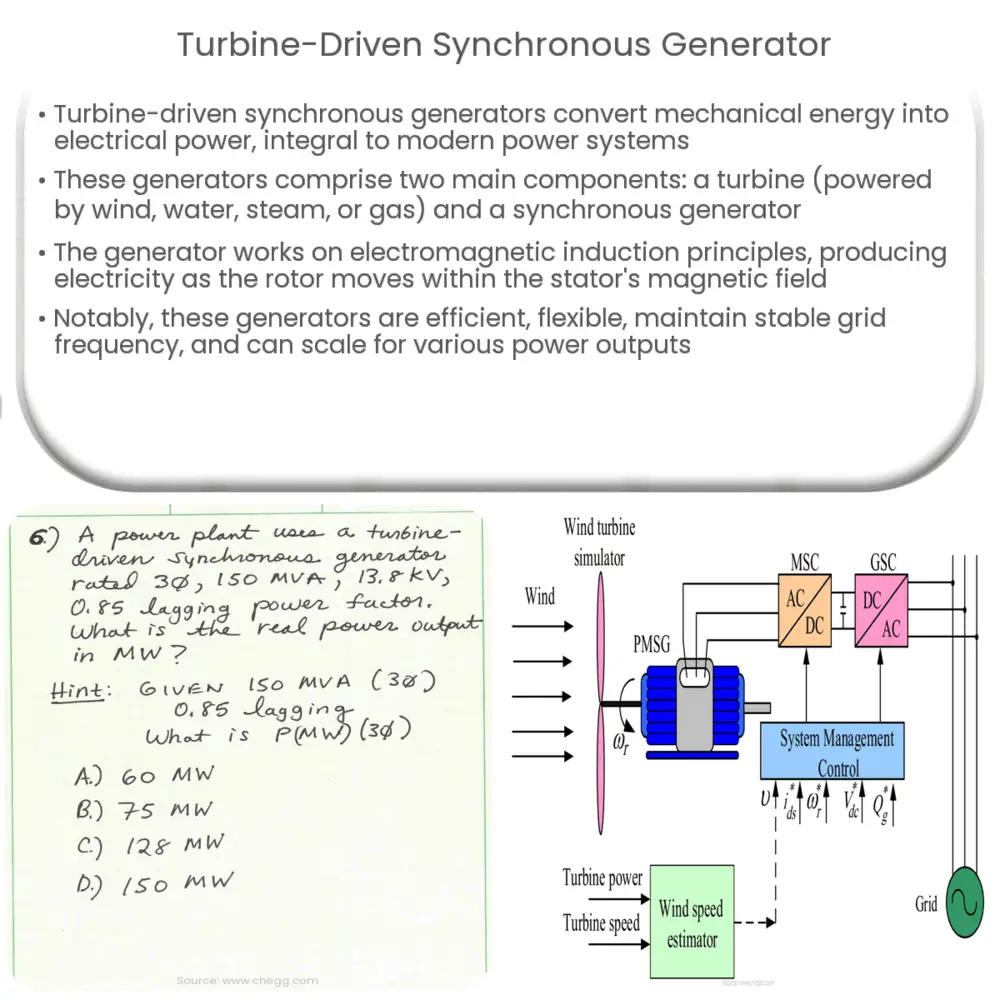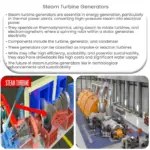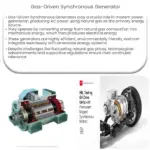Explore the workings of turbine-driven synchronous generators, their types, advantages, and role in global power generation.

Introduction to Turbine-Driven Synchronous Generators
A Turbine-Driven Synchronous Generator is a complex yet integral part of our modern power generation systems. The device is used extensively for producing electrical power in various sectors such as industrial, commercial, and residential.
The turbine-driven synchronous generator is essentially a type of alternator that converts mechanical energy into electrical energy. It involves two primary components: a turbine and a synchronous generator. The turbine, powered by various sources such as wind, water, or steam, drives the generator to produce electricity.
Turbine Types
- Steam Turbines: These are typically used in thermal power plants where heat energy is converted into mechanical energy. They utilize the steam produced by heating water to turn the turbine blades.
- Hydro Turbines: They leverage the kinetic energy of flowing water to drive the turbine. This method is commonly used in hydropower plants.
- Wind Turbines: These convert the kinetic energy of the wind into mechanical energy. They are a crucial part of renewable energy production.
- Gas Turbines: They use high-pressure gas to turn the turbine. Gas turbines are often used in power plants and jet engines.
Synchronous Generators
The second component of a turbine-driven synchronous generator is the synchronous generator itself. This device converts the mechanical energy obtained from the turbine into electrical energy.
The synchronous generator operates based on the principles of electromagnetic induction discovered by Michael Faraday. A conductor, when moved in a magnetic field, induces an electromotive force (EMF). In a synchronous generator, the rotor (rotating part) is an electromagnet, while the stator (stationary part) comprises conductors that cut through the magnetic field. This motion induces an EMF in the stator’s conductors, thereby producing electric power.
Synchronous generators are preferred for power generation because they can operate at a variety of electrical power frequencies, depending on the speed of the turbine. This makes them highly versatile and suitable for a wide range of applications.
The operation of a turbine-driven synchronous generator is inherently linked with the power grid’s frequency, typically 50 or 60 Hz. This grid frequency stability is crucial for the reliable operation of all electrical devices connected to it.
Working Principle of Turbine-Driven Synchronous Generators
The working principle of a turbine-driven synchronous generator is the conversion of mechanical energy into electrical energy. The turbine, driven by kinetic or thermal energy, imparts rotational movement to the rotor of the synchronous generator. The rotor, an electromagnet, then rotates within the stator’s winding, creating a magnetic field. This movement induces an electromotive force in the stator windings, consequently generating electricity. The electricity thus generated is then transferred to the power grid for distribution and use.
Advantages of Turbine-Driven Synchronous Generators
- Efficiency: Turbine-driven synchronous generators are highly efficient, especially when operated at or near their rated capacity.
- Flexibility: They offer the flexibility to be driven by various types of turbines, including steam, hydro, wind, and gas, making them suitable for different energy generation methods.
- Stability: These generators are known for their capability to maintain a stable frequency, making them ideal for grid applications.
- Scalability: Turbine-driven synchronous generators can be designed for a wide range of power outputs, from small-scale residential use to large industrial applications.
Conclusion
In conclusion, turbine-driven synchronous generators play a pivotal role in the global power generation landscape. Their flexibility, efficiency, and scalability make them a suitable choice for a wide array of applications, from renewable energy sources like wind and hydro to conventional thermal power plants.
Despite the rise of new technologies and power generation methods, the fundamental principle of converting mechanical energy into electrical energy remains the same. Turbine-driven synchronous generators are a testament to this enduring principle, continuing to power our world and facilitating the transition towards more sustainable and diverse energy sources.




